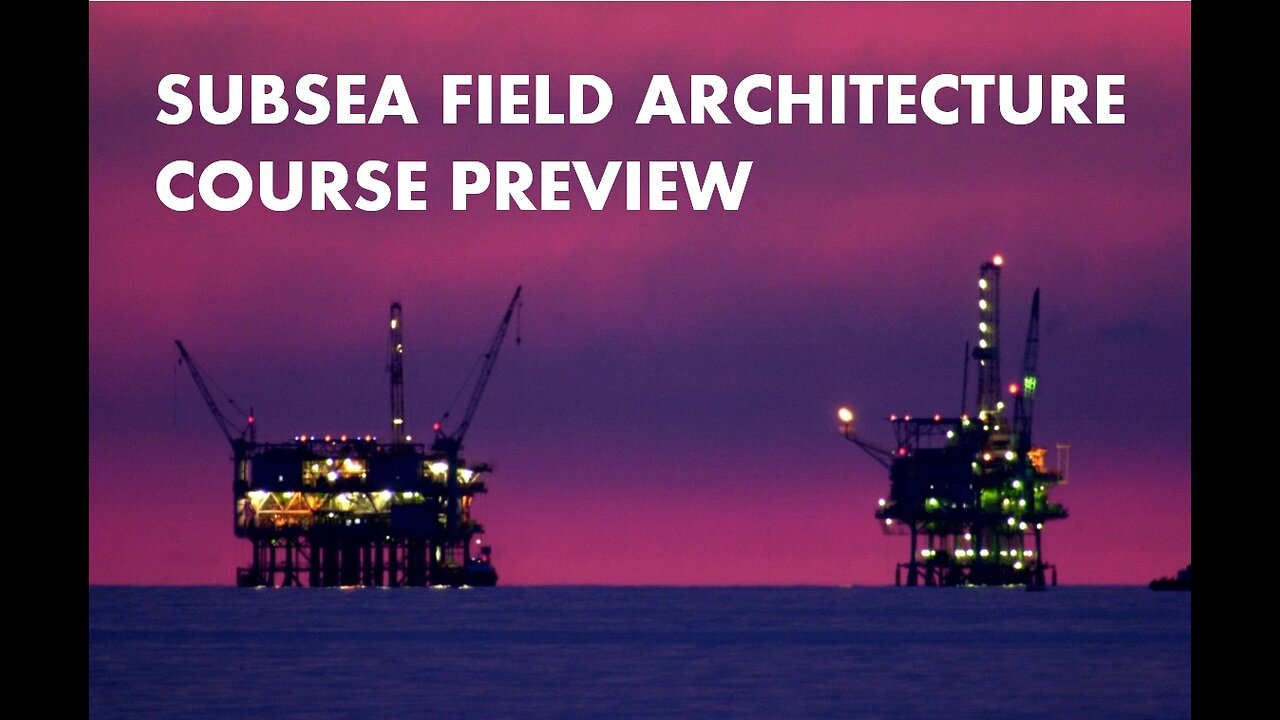Premium Only Content

Subsea Field Architecture Course Preview
Subsea field architecture for production systems are generally arranged and used to extend the reach of existing platforms. For example, the geometry and depth of a reservoir may be such that a small section cannot be reached easily from the platform using conventional directional drilling techniques or horizontal wells, in which case, a subsea development via tie-back can be an economical solution. Based on the location of the tree installation, a subsea system can be categorized as a dry tree production system or a wet tree production system. Water depth can also impact subsea field development. For the shallower water depths, limitations on subsea development can result from the height of the subsea structures. Christmas trees and other structures cannot be installed in water depths of less than 30 m (100 ft). For subsea development in water depths less than 30 m (100 ft), jacket platforms consisting of dry trees can be used. The goal of subsea field development is to safely maximize economic gain using the most reliable, safe, and cost-effective solution available at the time. Even though wet well systems are still relatively expensive, their attraction in reducing overall capital expenditures has already been made clear. Subsea tie-backs are becoming popular in the development of new oil and gas reserves in the 21st century. With larger oil and gas discoveries becoming less common, attention has turned to previously untapped, less economically viable discoveries.
For full videos you can visit this link :
https://drive.google.com/file/d/1kwy-mqVcLIdanebmYV8qrIrNfZlIvtA4/view?usp=sharing
and you will be directed to a google drive link where you can download all files of this course
https://drive.google.com/file/d/1wU4FfeM1eAXIKnQaSZmh_K_C0Y5sdDf_/view?usp=drive_link
-
 12:24
12:24
Tundra Tactical
7 hours ago $4.27 earnedThe SIG Roast to ND Them All
63.2K8 -
 1:02:31
1:02:31
BonginoReport
10 hours agoDeportations Keep “Frightened” Michelle Obama Awake at Night (Ep. 37) - Nightly Scroll with Hayley
150K190 -
 1:54:29
1:54:29
Adam Does Movies
2 days ago $3.28 earnedTalking Movie News & Just Chatting About Films - LIVE!
46.3K3 -
 1:02:51
1:02:51
Anthony Rogers
1 day agoEpisode 364 - JFK FILES
24.7K1 -
 1:41:02
1:41:02
megimu32
6 hours agoON THE SUBJECT: 1 Million Views Party! Diddy Drama, Marvel Weirdness, and Total Prom Chaos
35.5K16 -
 1:18:44
1:18:44
Kim Iversen
9 hours agoMagnetic Pole Shift: Europe’s Blackout Is Just the Beginning | 90° Earth Flip Coming
118K290 -
 2:44:58
2:44:58
Laura Loomer
8 hours agoEP118: LIVE COVERAGE: Trump Celebrates 100 Days In Office At Michigan Rally
77.6K38 -
 3:40:42
3:40:42
Barry Cunningham
15 hours agoWATCH TRUMP RALLY LIVE: PRESIDENT TRUMP MARKS 100 DAYS IN OFFICE WITH A RALLY IN MICHIGAN
56.7K23 -
 1:32:44
1:32:44
Badlands Media
15 hours agoBadlands Media Special Coverage: President Trump's 1st 100 Days Rally
67.8K4 -
 8:08:30
8:08:30
RalliedLIVE
10 hours ago $1.31 earnedWarzone All Night w/ Ral
21.9K4